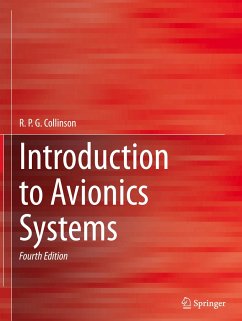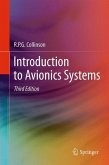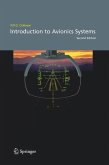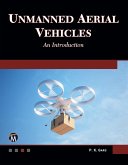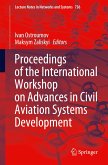Now in a revised fourth edition, this course-tested textbook explains the basic principles and underlying theory of the core avionic systems in modern civil and military aircraft. The new edition includes extensive revisions on the latest developments in helmet-mounted displays (HMDs), the use of helmet-mounted rate gyros for helmet tracking, HUD/HMD optical waveguide system technology, and the latest advances on replacing CRTs with solid state displays in HUDs. Updates on controls and fly-by-wire include a section on civil aircraft to cover the Airbus A350 and the advances in its flight control system over the Airbus A380. A new section on automatic flight control of vectored thrust aircraft covers the BAE Systems Harrier and the Lockheed Martin F-35B Lightning 2 Joint Strike Fighter. Detailed coverage is provided for F-35B flight control systems for vertical landing.
Introduction to Avionic Systems, Fourth Edition is an ideal textbook for undergraduate and graduate courses in avionics and aeronautical engineering, as well as professional development and training courses for post-graduates entering the aerospace industry from a wide range of technical backgrounds and practicing engineers at all levels who require an understanding of avionic systems, aircraft navigation, flight control, and data transmission and systems.
Introduction to Avionic Systems, Fourth Edition is an ideal textbook for undergraduate and graduate courses in avionics and aeronautical engineering, as well as professional development and training courses for post-graduates entering the aerospace industry from a wide range of technical backgrounds and practicing engineers at all levels who require an understanding of avionic systems, aircraft navigation, flight control, and data transmission and systems.
"The book deals with both civil and military avionic systems. Good in-depth coverage is provided on topics such as displays, fly-by-wire controls, navigation, autopilots and flight management systems and system integration. It provides much theoretical information and calculations, particularly aimed at graduate and post graduate students. There is also a chapter on UAVs, vehicles which are rightly described as being "dependent totally on avionic systems". These are currently and increasingly used in military applications and also, in the future, for civil applications. [...] The book is very well illustrated in both black and white and colour. Very comprehensive lists of reference documents are provided. A glossary of terms and a list of symbols are provided which are particularly useful to the student readers. [...] The book provides a wealth of detailed and current information on a very wide range of topics. Inevitably, in such a dynamic industry, it will become out of date but it is written in such a way as to allow it to fill a very important gap in the aerospace literature for some years to come."
(Royal Aeronautical Society)
"... the material gives the reader an excellent and comprehensive introduction to the multidisciplinary knowledge and skills essential for involvement in any modern avionics systems development. [...] It should be essential reading for all graduates involved in aerospace systems work and those entering the avionics industry. It will also provide an excellent reference for practicing system engineers. [...] It is more than just a reference text and I would recommend it to all those with an interest in integrated airborne avionic systems."
M.V. Cook, Cranfield University, IEE Computing adn Control Engineering, Oct/Nov. 2005
(Royal Aeronautical Society)
"... the material gives the reader an excellent and comprehensive introduction to the multidisciplinary knowledge and skills essential for involvement in any modern avionics systems development. [...] It should be essential reading for all graduates involved in aerospace systems work and those entering the avionics industry. It will also provide an excellent reference for practicing system engineers. [...] It is more than just a reference text and I would recommend it to all those with an interest in integrated airborne avionic systems."
M.V. Cook, Cranfield University, IEE Computing adn Control Engineering, Oct/Nov. 2005
From the reviews of the third edition:
"This book ... 'aims to explain the basic principles of the key avionic systems in modern aircraft.' ... this book earns a place on the shelf to be dipped into as required ... . this book also provides the historical background of how things came to be the way they are and these sections will be useful to those entering the aerosystems and avionic world ... ." (John Campbell, Aerospace, April, 2014)
"This book ... 'aims to explain the basic principles of the key avionic systems in modern aircraft.' ... this book earns a place on the shelf to be dipped into as required ... . this book also provides the historical background of how things came to be the way they are and these sections will be useful to those entering the aerosystems and avionic world ... ." (John Campbell, Aerospace, April, 2014)

